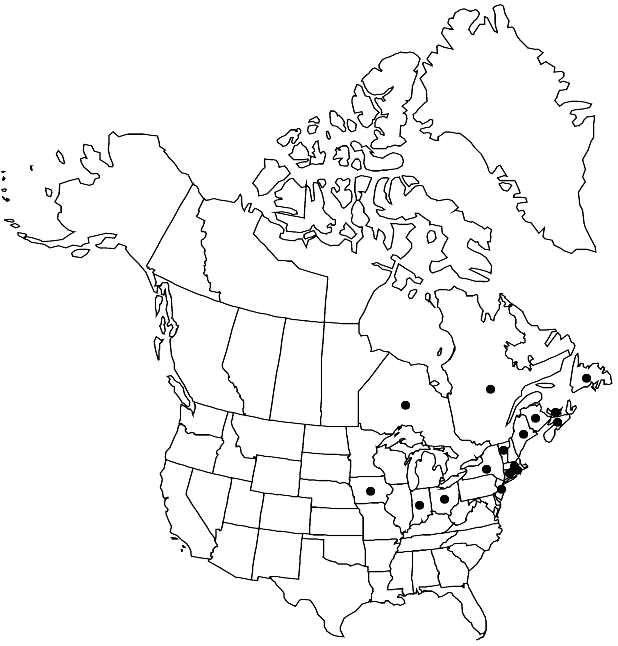Difference between revisions of "Salix viminalis"
Sp. Pl. 2: 1021. 1753.
FNA>Volume Importer |
FNA>Volume Importer |
||
| Line 50: | Line 50: | ||
|publication year=1753 | |publication year=1753 | ||
|special status= | |special status= | ||
| − | |source xml=https://jpend@bitbucket.org/aafc-mbb/fna-data-curation.git/src/ | + | |source xml=https://jpend@bitbucket.org/aafc-mbb/fna-data-curation.git/src/f6b125a955440c0872999024f038d74684f65921/coarse_grained_fna_xml/V7/V7_169.xml |
|genus=Salix | |genus=Salix | ||
|subgenus=Salix subg. Vetrix | |subgenus=Salix subg. Vetrix | ||
Revision as of 20:21, 24 September 2019
Stems: branches yellow-brown, gray-brown, or yellowish, not glaucous, glabrous or puberulent; branchlets yellow-brown or yellowish (sometimes color obscured by hairs), glabrous, densely to sparsely villous, velvety, or puberulent. Leaves: stipules (not adnate to petioles), rudimentary or absent on early ones, (late ones sometimes brownish, linear, 5.4–10.4 mm), apex acuminate; petiole shallowly grooved adaxially, 4–13 mm, villous, puberulent, or velvety adaxially; largest medial blade linear, lorate, narrowly oblong, or narrowly elliptic, 53–130 × 5–33 mm, base cuneate, margins strongly revolute, sinuate or apparently entire, (glands epilaminal), apex acuminate, acute, or convex, abaxial surface apparently glaucous (obscured by hairs), densely short-silky, woolly, or tomentose, (midribs prominent, yellowish, and hairy), hairs appressed, spreading or erect, straight or wavy, adaxial dull or slightly glossy, sparsely or moderately densely pubescent, hairs gray; proximal blade margins entire; juvenile blade yellowish green, very densely tomentose or short-silky abaxially, hairs white. Catkins flowering just before or as leaves emerge; staminate stout, 24–48 mm, flowering branchlet 0–2 mm; pistillate densely flowered, 23–55 mm, flowering branchlet 0–6 mm; floral bract brown or tawny, 1.6–2.2 mm, apex convex or rounded, abaxially hairy, hairs straight. Staminate flowers: adaxial nectary narrowly oblong or oblong, 0.6–1.5 mm; filaments distinct; anthers purple turning yellow, ellipsoid to shortly cylindrical, 0.6–0.8 mm. Pistillate flowers: adaxial nectary narrowly oblong or oblong, 0.9–1.4 mm; ovary pyriform, beak gradually tapering to styles; ovules 12–18 per ovary; styles 0.6–1.8 mm. Capsules 4–6 mm. 2n = 38.
Phenology: Flowering Apr-early May.
Habitat: Sandy, open woods, cobble rivershores, lake margins, and roadsides
Elevation: 0-300 m
Distribution

N.B., Nfld. and Labr. (Nfld.), N.S., Ont., P.E.I., Que., Conn., Ind., Iowa, Maine, Mass., N.J., N.Y., Ohio, R.I., Vt., Europe.
Discussion
Salix ×smithiana (S. caprea × S. viminalis) is distinguished from S. viminalis by having leaf blades usually broad, 2.8–4.9(–6.4) times as long as wide, stipes 0.9–2 mm, ovaries short-silky, branches ± brittle at base, and petioles flat to convex adaxially; S. viminalis has leaf blades usually very narrow, 4.7–13.7 times as long as wide, stipes 0.1–0.5 mm, ovaries long-silky, branches flexible at base, and petioles shallowly grooved adaxially.
See Salix ×smithiana [p. 132] and 86. S. pellita for further comparative descriptions.
Selected References
None.